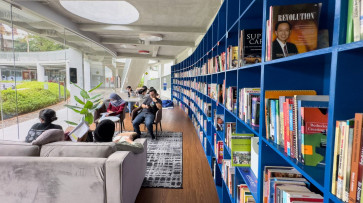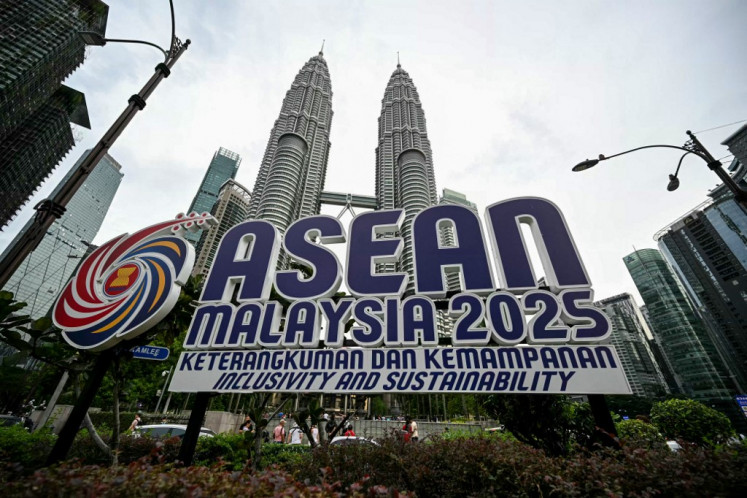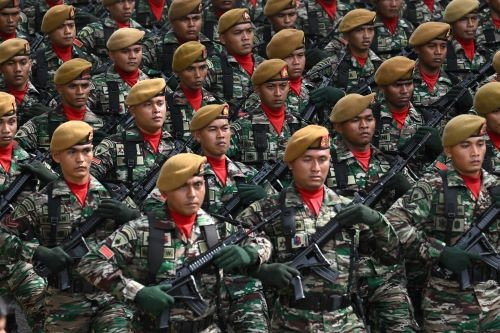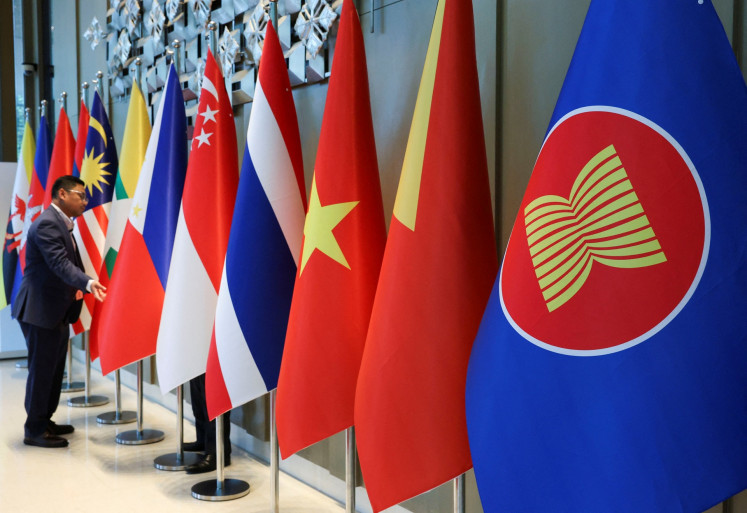TNI interoperability: Real progress or mere buzzword?
There has been a lingering tendency for the Army, the Air Force and the Navy to procure primary weapons and communications systems separately, instead of through a more integrated and centralized process at the Defense Ministry.
Change text size
Gift Premium Articles
to Anyone
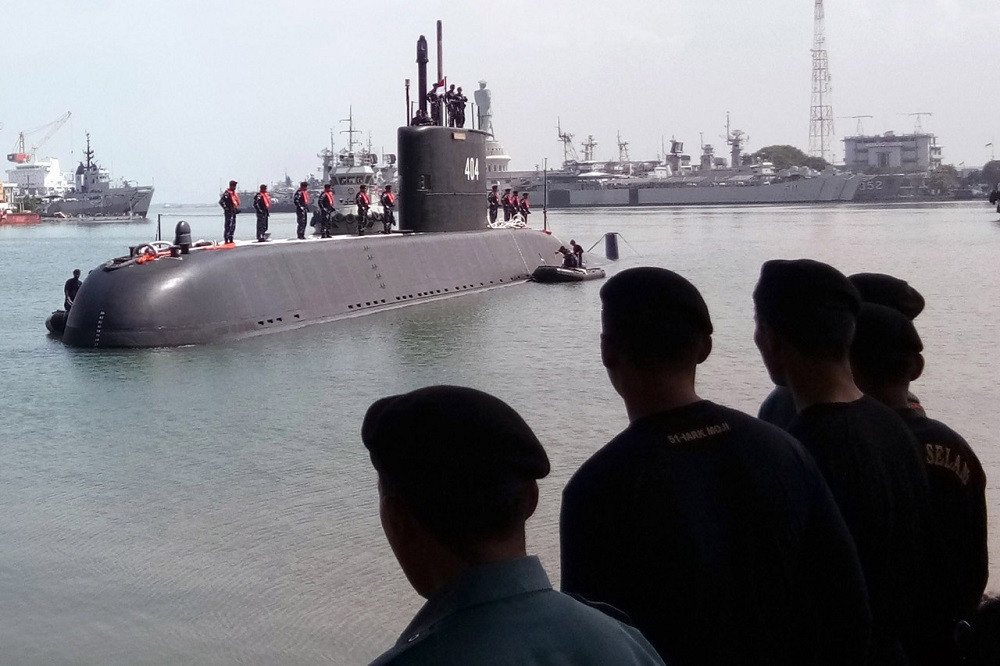
S
ince the early 2000s, the Indonesian Military (TNI) has been highlighting the importance of achieving interoperability. More recently in 2017, just before his appointment as the TNI Commander, Air Chief Marshal Hadi Tjahjanto stressed his commitment to enhancing interoperability. Since then, some progress have been made in synergizing the three TNI branches, although challenges remain.
In its broadest sense, interoperability means the ability of an organization’s components to exchange services to enable them to operate effectively together. Interoperability is closely linked to combat systems and technology, with special emphasis on standardizing command, control, communications, computers and intelligence (“C4i” in defense and computing systems) among the relevant units.
Beyond this, interoperability also has a politico-strategic dimension, which covers a military’s capability to operate efficiently with its allies in contingencies. However, the TNI largely discusses interoperability only in the operational context in line with Indonesia’s foreign policy principle of “Bebas Aktif” (free and active), and the country’s reluctance to forge formal alliances.
Since 2018, the TNI has taken a number of steps to enhance interoperability within the Indonesian armed forces. Admittedly, these steps also had other motivations, such as to create new posts for “non-job” officers and to address the rise in external threats, particularly in the South China Sea. In December 2018, Hadi inaugurated a new military base, dubbed the “integrated unit”, on Natuna Island near the South China Sea. When it is complete, the Natuna base will have various facilities to accommodate the Army, Navy and Air Force, including equipment like UAVs, fighter jets and submarines.
The TNI also plans to develop other integrated units in eastern Indonesia, including Merauke, Saumlaki and Biak.
Subsequently in September 2019, Hadi inaugurated the establishment of three Joint Regional Defense Commands (Kogabwilhan) to function as the TNI’s “first responder”. Kogabwilhan are tasked with mobilizing units from the Army, Navy and Air Force under their command, and are thus expected to improve interoperability in their role as an overarching operational command for the three TNI branches.
Less than four months after its establishment, a Kogabwilhan was tasked with an operation to drive Chinese vessels out of Natuna waters. During the operation, the TNI demonstrated more integrated command and control, as it deployed combined assets from the Navy First Fleet Command and the Air Force First Operation Command.
Despite such progress, achieving interoperability will be a long-term exercise under current TNI practices and norms. These practices include Indonesia’s policy to procure arms from diverse suppliers. On top of this, there has been a lingering tendency for the Army, the Air Force and the Navy to procure primary weapons and communications systems separately, instead of through a more integrated and centralized process at the Defense Ministry, which poses challenges to running joint operations while also increasing training and maintenance costs.
Understandably, the TNI and the Defense Ministry adopted the existing weapons procurement policy to diversify their suppliers following the United States arms embargo in the 1990s. Prior to the embargo, from the 1970s to 1991, Indonesia had made significant defense purchases from the US, including 16 A-4 fighter planes in 1981, 12 F-16 aircraft in 1986 and 13 Harpoon anti-ship missile systems in 1990.
After 1991, however, Indonesia started to make its purchases in non-US territories such as the United Kingdom, Australia and Western Europe in response to congressional criticisms over US arms sales. Indonesia turned even further away from the West following the European Union’s embargo against Indonesia in September 1999 in response to human rights violations in East Timor.
Indonesia’s about-face from the West was complete in 2003, when former president Megawati Soekarnoputri signed a weapons agreement with Russian President Vladimir Putin to purchase six Russian combat aircraft, including two Su-27SK and Su-30MK. Since then, Indonesia has procured more Russian aircraft. To date, TNI has been procuring a mixed balance of eastern and western fighter aircraft.
The practice of procuring arms from diverse suppliers is likely to continue under incumbent Defense Minister Prabowo Subianto. Soon after his appointment in October 2019, Prabowo highlighted the urgency for Indonesia to modernize its weapons systems, at least until the COVID-19 pandemic hit. He spent his first six months in office exploring arms deals with multiple countries, including Turkey, France and Russia.
In January 2020 following Prabowo’s meeting with his French counterpart, The Jakarta Post cited a La Tribune article claiming that Prabowo was interested in purchasing 48 Rafale fighter jets from France. And last December, the ministry entered into discussions with the US on the procurement of its F-15 and F-18 fighter jets.
Moreover, there are questions as to whether Indonesia will go ahead with the purchase of 11 Su-35 fighter jets from Russia, with which it signed a US$1.14 billion deal back in 2018. Although some reports speculated that Indonesia had backed away from the purchase plan due to its fear of US sanctions under the Countering America’s Adversaries Through Sanctions Act (CAATSA), Russian officials claimed in mid-March 2020 that the plan was still “active”.
At the same time, it is unclear whether Indonesia will continue to develop the Korean Fighter Xperiment/Indonesia Fighter Xperiment (KFX/IFX) of 4.5 generation fighters with South Korea.
While any significant weapons purchase may be delayed due to budget cuts following the pandemic, the Defense Ministry’s recent attitude toward potential purchases signals that interoperability may not be top priority in the procurement process. Moreover, neither the TNI nor the ministry has published any tangible blueprint for interoperability, which means that there is no clear benchmark or timeline for measuring progress.
Although they refer to the Minimum Essential Force (MEF) as a blueprint for weapons procurement, the MEF shopping list does not provide specifications for each item, leaving them to the individual TNI branches to determine. Until a blueprint or formal document on interoperability is issued, the TNI’s commitment to achieving interoperability remains unclear.
***
The writer is a senior analyst at S. Rajaratnam School of International Studies, Nanyang Technological University, Singapore.



